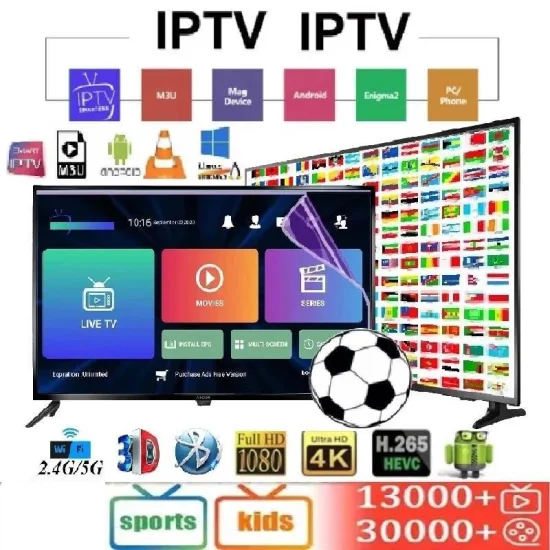Keep Connected to Your Favorites: Protect Your IPTV Subscription Today!
How IPTV Works: A Step-by-Step Guide to Web Protocol Television Modern Technology
Web Method Television (IPTV) has actually revolutionized the means we eat television material, providing a new world of opportunities via the power of the net. From the fundamental concepts of IPTV to the complex procedure of web content shipment, each step plays an important role in guaranteeing a seamless watching experience.
IPTV Fundamentals
In comprehending IPTV basics, it is critical to grasp the essential operations of this innovation in supplying television web content over the net. IPTV, which stands for Net Method Television, makes use of Net Protocol (IP) networks to transfer tv material to customers' devices. Unlike traditional approaches of relaying television content through cable television or satellite signals, IPTV streams media through high-speed internet connections.

Moreover, IPTV permits interactive capabilities, such as video as needed (VOD) and digital program overviews (EPG), boosting the individual experience by offering even more control and versatility in accessing content. Overall, understanding the fundamentals of IPTV sets the foundation for discovering its more sophisticated capabilities and the advantages it uses to contemporary television usage.
Material Distribution Process
Efficient material distribution in IPTV systems entails a well-structured process that makes sure smooth transmission of television material over IP networks. The content distribution procedure in IPTV starts with the development of the video clip web content, which is after that inscribed right into electronic format appropriate for IP transmission.

Middleware Capability
With the integration of middleware, IPTV systems gain enhanced capability that simplifies user interaction and content administration. One of the vital functions of middleware in IPTV is to enable personalized customer experiences by supplying features such as interactive program overviews, video-on-demand services, interactive advertising, and customer choices monitoring.

Gadget Compatibility
Offered the pivotal function of middleware in enabling seamless communication and content management in IPTV systems, a vital element to think about is the compatibility of tools utilized for accessing the IPTV solutions. Device compatibility is important for ensuring a smooth individual experience and optimum performance when accessing IPTV web content.
In the context discover this of IPTV, device compatibility describes the ability of a tool to successfully connect with the IPTV service, Full Report present material properly, and support the essential procedures and codecs for streaming video clip content online. Different gadgets, such as clever Televisions, set-top boxes, smartphones, tablets, and computers, might have varying levels of compatibility with IPTV solutions.
To make certain a seamless viewing experience, it is essential for individuals to choose devices that work with the particular IPTV solution they are making use of. In addition, IPTV provider should offer support for a vast variety of devices to accommodate the varied requirements of their individual base. By prioritizing device compatibility, both customers and provider can enhance the overall IPTV experience.
Top Quality of Service (QoS)
Thinking about the crucial role of keeping a high criterion of efficiency and reliability in IPTV systems, ensuring regular Quality of Solution (QoS) continues to be a basic facet of the individual experience. QoS in IPTV describes the capacity of the system to provide web content with very little interruptions, high resolution, and fast filling times. To achieve optimal QoS, different variables need to be resolved. Network data transfer is important to support high-grade video clip streaming without buffering or pixelation. Furthermore, latency, jitter, and packet loss should be lessened to boost the seeing experience.
Service carriers utilize QoS devices such as traffic prioritization, buffering, and error correction to preserve a stable IPTV service. By prioritizing IPTV web traffic over much less time-sensitive data, companies can make sure smooth playback Discover More even throughout optimal usage hours. Buffering aids make up for network variations, while mistake adjustment strategies improve information integrity.
Constant tracking and optimization of QoS parameters are important to adjust to altering network conditions and user needs. Eventually, a robust QoS framework is important for providing a smooth and delightful IPTV experience to customers.
Conclusion
To conclude, IPTV runs with the transmission of tv content over web procedure networks. The technology includes a systematic process of material distribution, helped with by middleware capability to make sure compatibility throughout numerous devices. High quality of Service plays an important function in preserving the effectiveness and integrity of IPTV services. Understanding the essential concepts of IPTV is essential for grasping the intricacies of this ingenious television technology.